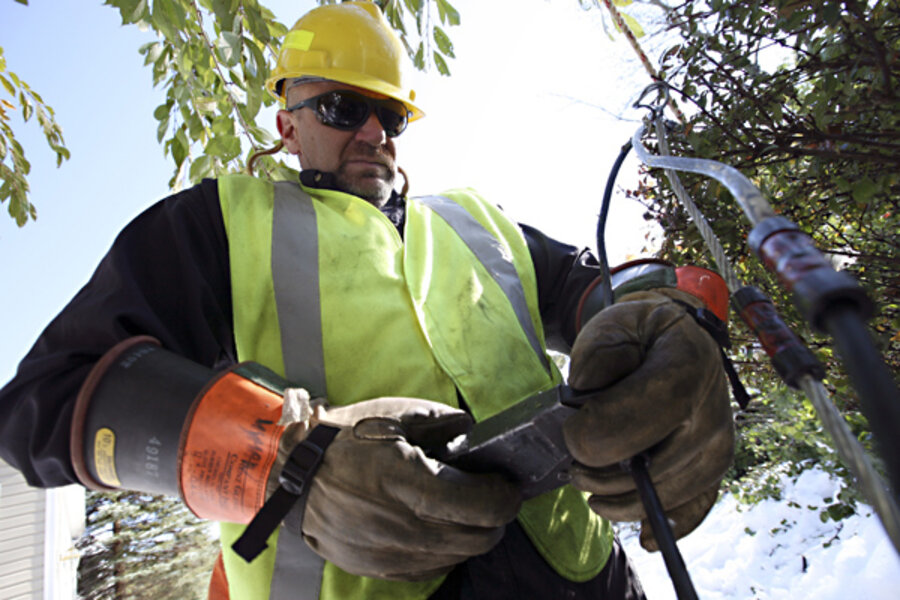DIY: Six ways to know when to call a pro
Loading...
Doing home improvement projects yourself can save you money. My frugal father once taught himself how to put a brick mailbox back together after I backed into it with my car – saving us both $500.
Then again, DIY projects can also cost you more money if you end up DIW (doing it wrong) and then have to hire a professional.
So how do you decide when to go it alone or when to go with a pro? Here’s a checklist…
1. Does the project take specialized knowledge?
Some projects – like installing an HVAC system – take more than practice. If the project you’re considering requires a special skill or inside knowledge you don’t possess, hire a professional. Here’s a quick list, although even the DIY projects aren’t necessarily for everyone…
Do it yourself:
- Painting
- Crown molding installation
- Toilet installation
- Appliance installation
- Weather stripping
- Landscaping
Hire a professional:
- Heating and cooling installation
- Relocating plumbing
- Major electrical work
- Foundation repair
- Window replacement
- Driveway paving
2. Will you need special tools?
Many home improvement projects only require the tools you already own, or ones you can rent. If you don’t own them and can’t rent them, don’t buy them. Hire a professional who already owns the tool – and save yourself the cost of buying an expensive piece of equipment you’ll only use once.
3. Is the project large or in a highly visible area?
If you’re not an expert at doing something in a key area of your home, it may turn out bad and look worse. For example, I built some shelves in my bedroom. They don’t look great, but no one sees them, so I don’t mind. But I wouldn’t have installed the tile in my kitchen. I see that floor every day – and so do my family and friends. I want it to look professionally done.
4. What would a professional recommend?
If you know a contractor, ask him if he thinks you can handle the project on your own. If not, ask a hardware store clerk. Some clerks know a lot about their specific departments and will give you an honest answer. And while you’re at it, find out if the store offers free or low-cost clinics that teach the skill required.
5. Will the savings be worth it?
In my opinion, spending 45 hours on a project isn’t worth it if I’ll only save $100 off the cost of hiring a professional. I’d rather pay the money and preserve my free time – but the true cost vs. value of time is up to you. Before making that decision, check out DIYorNot. The site compares the cost of hiring a professional with the cost and time of doing it yourself on hundreds of improvement projects.
6. Is there danger involved?
Making a mess of your entire house isn’t the only risk to a DIY project. In some cases, you could be seriously injured. Don’t risk falling off a roof or electrocuting yourself. Hire a professional.
If you decide to DIY…
There are several great resources for DIY home improvement projects. Check out:
- Home Depot Project Guides
- Lowe’s How-To Projects
- Instructables
- DIY Ideas
- Do It Yourself
- This Old House
- The Family Handyman
If you decide to hire a pro…
Take these steps before you hire a contractor – you’ll save money and aggravation.
- Look at the right time: Shop for a contractor in the off-season – like right after the new year. If the contractor doesn’t have a lot of work at the moment, you’ll get a better price.
- Get multiple estimates: Get estimates from three to five contractors. Their prices vary widely, and you’ll find a better deal by shopping around.
- Choose a contractor you like: Odds are, you’ll have to see the contractor at least once while he’s working on your project, and probably a lot more. You may even butt heads with him on a decision or two. Things will go smoother if you choose someone you can get along with.
- Ask for references: Don’t base your decision entirely on price and who you like the best. Ask for recommendations from friends or family members, or have the contractor provide references you can contact.
Deciding between a do-it-yourself idea and a professional contractor isn’t the only way to save money on home improvements. Check out "23 Ways to Lower the Cost of Home Improvement" for a ton of tips or "How to Remodel Your Kitchen for Less Than $5,000 " if you want to improve your cooking space. And if you’re planning on selling, check out "5 Home Improvements That Won’t Sell Your House" before you get started.
Angela Colley is a writer for Money Talks News, a consumer/personal finance TV news feature that airs in about 80 cities as well as around the Web. This column first appeared in Money Talks News.







